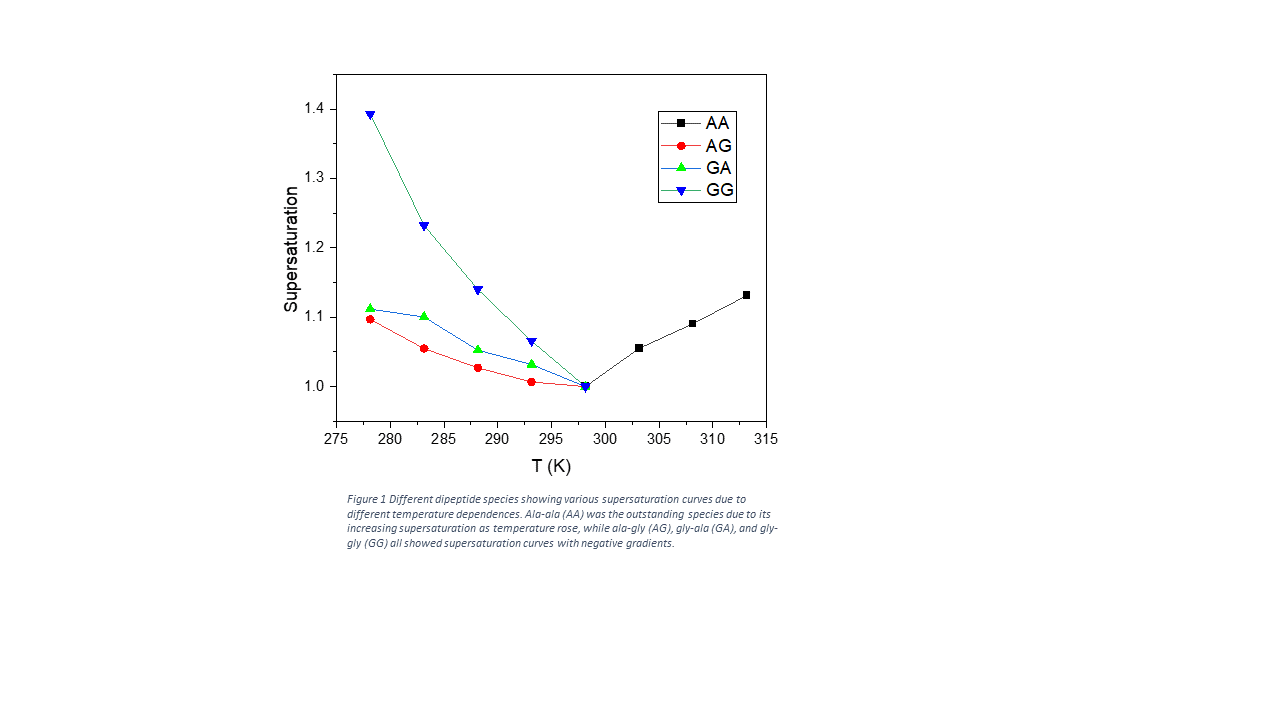2023 AIChE Annual Meeting
(324b) Crystallisation Process Design for the Separation of Dipeptides Based on Alanine and Glycine with Antisolvent Addition
Authors
In this research, we proposed a separation method design for the aqueous system involving model peptides based on alanine and glycine: dialanine (ala-ala), alanyl glycine (ala-gly), glycyl alanine (gly-ala) and diglycine (gly-gly). The difference in temperature dependency of solubility was utilise for the separation. Before the crystallisation started, all the peptide species were saturated at room temperature (298.15K). First, ala-ala was separated by increasing temperature from 298.15K to 313.15K, with a supersaturation ratio of 1.13. At the meantime, since the other 3 dipeptidesâ supersaturation decreased, they stayed in the liquid phase. In this way, the pure ala-ala crystal could be obtained. Second, decrease temperature to 288.15K, where the supersaturation of gly-gly was 1.14, while gly-ala and ala-gly reached supersaturation ratio of 1.05 and 1.02 respectively. As the crystallisation driving force of gly-gly was higher than other, by kinetic reason, the solid obtained in this step would be gly-gly in majority. Third, as for the separation of ala-gly and gly-ala, the difference in temperature dependence of their solubilities were not obvious. However, the absolute solubility of gly-ala was higher than ala-gly, which gave gly-ala higher crystallisation rate. Therefore, when we drop temperature further to 283.15K, gly-ala would come out in large quantity first. Besides, silicas with surface function groups (-NH2, -COOH and so on) would be tested on there effect to improve the selectivity of gly-ala crystallisation. Finally, the temperature was lowered to 278.15 K for long enough time for getting ala-gly crystals out from solution.
This method enabled stepwise recovery of 4 different model dipeptide from mixtures. The work could potentially inspire us design a crystallisation protocol to purify and separated longer-chain peptides from its own fragments by taking advantage of differences in solubility behaviours.
1 Fosgerau, K. & Hoffmann, T. Peptide therapeutics: current status and future directions. Drug Discovery Today 20, 122-128 (2015). https://doi.org:https://doi.org/10.1016/j.drudis.2014.10.003
2 von Heijne, G. The signal peptide. The Journal of membrane biology 115, 195-201 (1990).
3 Reubi, J. C. Peptide receptors as molecular targets for cancer diagnosis and therapy. Endocrine reviews 24, 389-427 (2003).
4 Jung, G. & BeckâSickinger, A. G. Multiple peptide synthesis methods and their applications. New synthetic methods (87). Angewandte Chemie International Edition in English 31, 367-383 (1992).
5 Coin, I., Beyermann, M. & Bienert, M. Solid-phase peptide synthesis: from standard procedures to the synthesis of difficult sequences. Nature protocols 2, 3247-3256 (2007).
